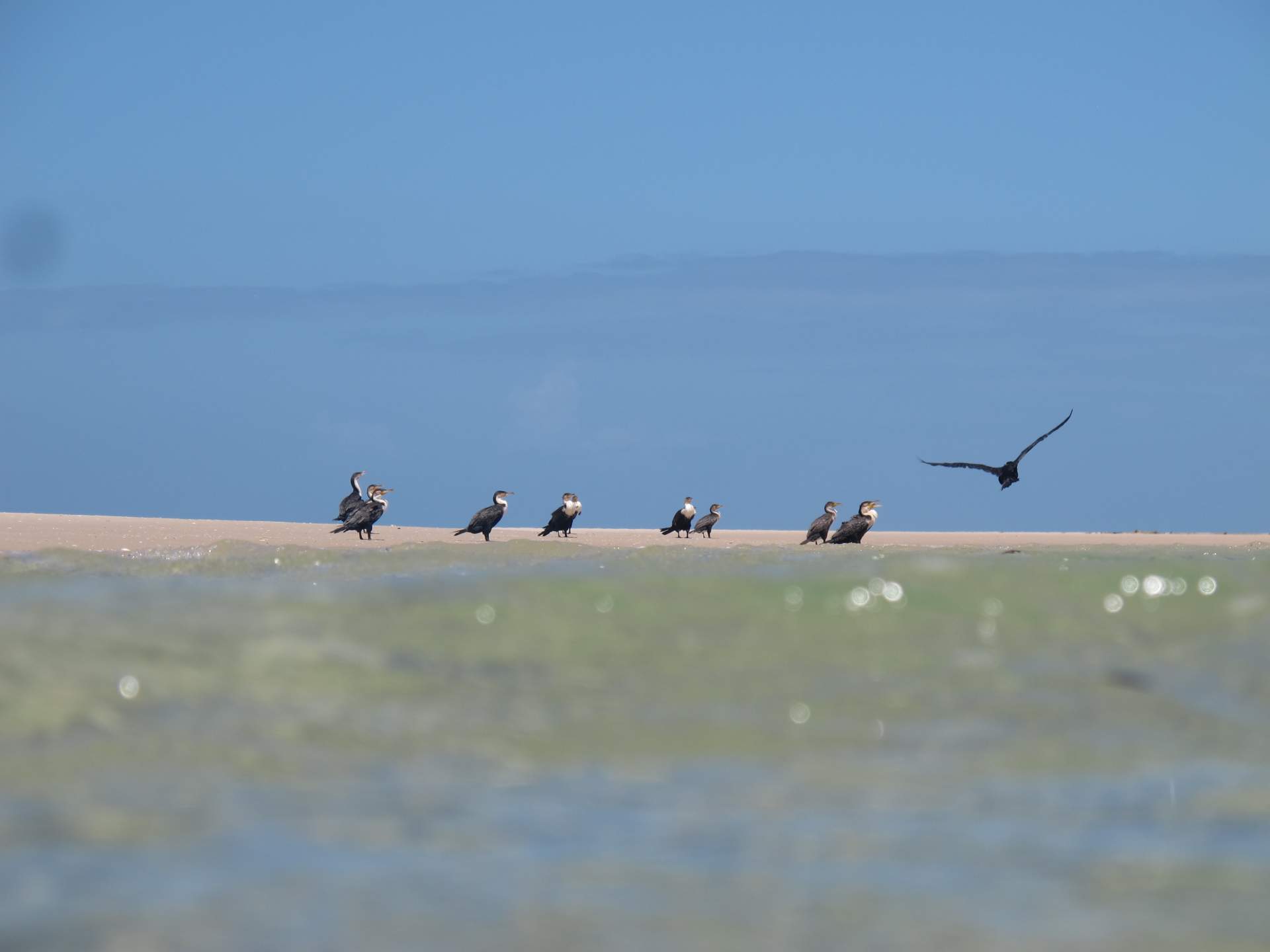Life at Sea
Oceans produce 50-70% of our oxygen and are crucial for binding carbon dioxide and heat distribution. They are also home to an estimated 80% of Earth’s biodiversity. Our programme in Mozambique protects a comprehensive blend of terrestrial and marine life, including five of the world’s seven sea turtle species and the last viable population of dugongs in the Western Indian Ocean.
Help us protect life at sea
Support our work to preserve ecosystems and biodiversity along coasts and at sea.
Marine ecosystems are crucial for global economies, with billions of people depending on the ocean for their livelihoods. Healthy marine ecosystems uphold sustainable fishing, tourism, and pharmaceutical development and generate significant economic benefits.
There is a deep interconnection between marine and terrestrial ecosystems, and changes in marine environments, such as ocean acidification, rising temperatures, or overfishing, can have detrimental effects on the entire planet, impacting weather patterns, climate, and agricultural productivity. The health of marine ecosystems impacts the overall balance of all our ecosystems.
OUR WORK
Our programme in Mozambique protects a comprehensive blend of terrestrial and marine life. Encompassing 890 000 hectares and bordered by national parks, game reserves, and 64.37 kilometres of coastline, the area is a critical ecological corridor between the Indian Ocean, the Great Limpopo Transfrontier Park, and other protected areas in Zimbabwe and South Africa. The Greater Bazaruto region off the coast is home to five of the world’s seven sea turtle species, listed from vulnerable to critically endangered, and the last viable population of dugongs in the Western Indian Ocean.
This area is also an important migratory corridor for many megafauna species and coastal breeding grounds for several species of dolphins and whales. The coastal region features dense, productive mangrove forests that serve as marine and freshwater species nurseries. These forests constitute 10% of Mozambique’s entire mangrove network and offer critical ecosystem services, including coastal shoreline protection against tidal storms and erosion, and play a pivotal role in carbon sequestration.


What can you do?
Help us protect larger areas of coasts and seascapes including the precious life at sea! For every € 5 you secure the protection of 10,000 m2 coastline for an entire year.


THE GLOBAL GOALS
By protecting and restoring ecosystems and biodiversity in coastal regions and at sea Wildhood actively contributes to the objectives of Sustainable Development Goal 14; Life below water, which is also key to fighting climate change (Goal 13) and securing food sources (Goal 2). Other goals reached through our protection of coastal regions are Goal 6: Clean water, sanitation and hygiene and Goal 15: Life on land.
Several development goals are met through supporting the employment of local women from rural communities. Direct effects are reduced poverty and hunger (Goal 1, 2 & 3), increased equality (Goal 5 & 10), decent working conditions and economic growth (Goal 8) and higher education levels (Goal 4 & 10) as more children go to school.

